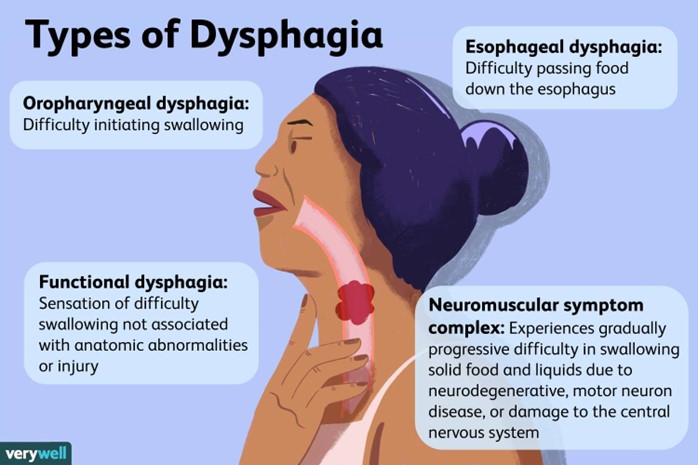A nurse is caring for a client who is at risk for aspiration pneumonia due to dysphagia. Which of the following actions should the nurse take to prevent this complication?
Tell the client to lie down after eating.
Instruct the client to tuck her chin when swallowing.
Place the client in a Fowler's position to eat.
Encourage the client to drink water before each meal.
The Correct Answer is B
Choice A reason: Telling the client to lie down after eating can increase the risk of aspiration pneumonia, as food or liquids can enter the lungs more easily when lying down.
Choice B reason: Instructing the client to tuck her chin when swallowing can help prevent aspiration pneumonia, as it closes off the airway and directs food or liquids into the esophagus.
Choice C reason: Placing the client in a Fowler's position to eat can help prevent aspiration pneumonia, as it elevates the head and chest and allows gravity to assist with swallowing.
Choice D reason: Encouraging the client to drink water before each meal can increase the risk of aspiration pneumonia, as it can thin out saliva and make it harder to control swallowing.

Nursing Test Bank
Naxlex Comprehensive Predictor Exams
Related Questions
Correct Answer is C
Explanation
Choice A reason: Limiting high-calorie supplements to between meals is not a good strategy for managing anorexia while receiving radiation therapy because it can reduce the appetite and intake of regular meals, which are more nutritious and balanced. High-calorie supplements should be used as an addition to, not a replacement for, regular meals.
Choice B reason: Avoiding overeating during 'good' days is not a good strategy for managing anorexia while receiving radiation therapy because it can cause discomfort, nausea, or vomiting, which can worsen anorexia and affect the tolerance of radiation therapy. Eating should be based on hunger and satiety cues, not on good or bad days.
Choice C reason: Consuming nutrition-dense foods first is a good strategy for managing anorexia while receiving radiation therapy because it can ensure adequate intake of calories, protein, vitamins, and minerals, which are essential for healing and recovery. Nutrition-dense foods are those that provide high amounts of nutrients per serving, such as eggs, cheese, nuts, beans, and meat.
Choice D reason: Eating hot foods rather than cold foods is not a good strategy for managing anorexia while receiving radiation therapy because it can irritate the mouth and throat, which may be inflamed or sore due to radiation therapy. Cold foods are more soothing and refreshing for the mouth and throat, such as ice cream, yogurt, smoothies, and popsicles.
Correct Answer is D
Explanation
Choice A reason: The client's creatinine level of 1.0 mg/dL is within the normal range, but it does not indicate that the treatment for benign prostatic hyperplasia has been effective. Creatinine is a waste product of muscle metabolism that is filtered by the kidneys and excreted in urine. It reflects the kidney function, not the prostate condition.
Choice B reason: The client's urine output of 35 mL/hr is below the normal range, which is 40 to 60 mL/hr. This indicates that the client may have dehydration, kidney impairment, or urinary retention, which are complications of benign prostatic hyperplasia. A low urine output does not indicate that the treatment has been effective.
Choice C reason: The client's stool color and consistency are not related to the treatment for benign prostatic hyperplasia. Stool characteristics depend on various factors, such as diet, medication, and bowel function. A soft, brown stool does not indicate that the treatment has been effective.
Choice D reason: The client's ability to urinate without straining is a sign that the treatment for benign prostatic hyperplasia has been effective. Benign prostatic hyperplasia is a condition in which the prostate gland enlarges and compresses the urethra, causing difficulty in urination. A treatment that reduces the size of the prostate or relaxes the bladder neck muscles can improve the urine flow and reduce the straining.
Whether you are a student looking to ace your exams or a practicing nurse seeking to enhance your expertise , our nursing education contents will empower you with the confidence and competence to make a difference in the lives of patients and become a respected leader in the healthcare field.
Visit Naxlex, invest in your future and unlock endless possibilities with our unparalleled nursing education contents today
Report Wrong Answer on the Current Question
Do you disagree with the answer? If yes, what is your expected answer? Explain.
Kindly be descriptive with the issue you are facing.
